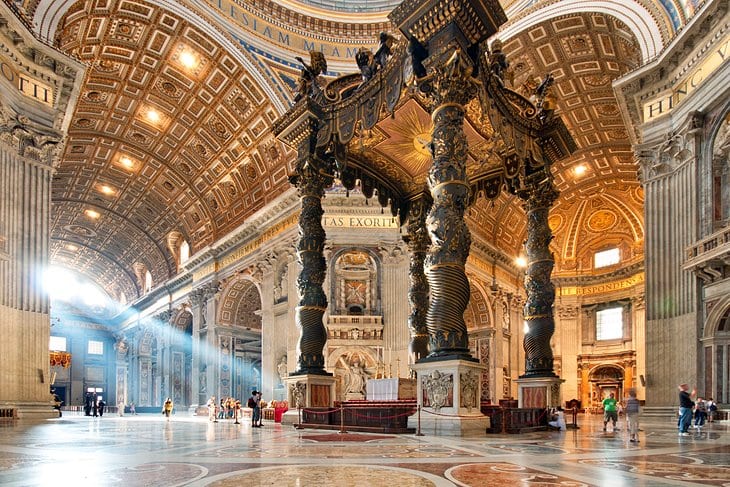
One of the most popular tourist attractions in Rome.
A little introduction
Citta del Vaticano (Vatican city) is the papal residence and was built over the tomb of Saint Peter.
It is the smallest independent state in the world. In 1929, Mussolini signed a treaty, the Lateran Treaty, with PopePius XI which gave the pope full sovereignty over what is now Vatican city. It is a fully working city with a post office with Vatican stamps, shops, offices and publishing houses, it has the Vatican radio station that broadcasts all over the world in 29 languages, there is a television station and a daily newspaper too.
There are more than a thousand residents responsible for the smooth, day-to-day running, with the Pope at the head and with their own police, as well as the Swiss Guard.
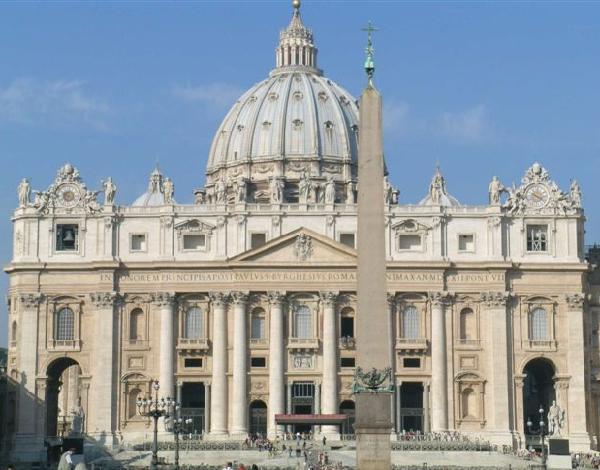
Vatican Museums
The Vatican museums are a collection of art and treasures from all over the world by popes. There are many exhibits that are displayed along halls and corridors which range from Egyptians and Etruscan bronzes to old masters and modern paintings.
The halls themselves are lavishly decorated halls and galleries. It is a vast 5.5 hectare complex that consists of two palaces, collectively known as the Palazzo Apostolico Vaticano. Like most things in Rome, you will not be able to see everything in a tour (or a day).

Museums in our 3 hour Vatican Museums, Sistine Chapel and St Peter’s Basilica tour;
The Pio-Clementino Museum
This is the biggest complex inside the museums and it an opportunity not to miss. It was founded in 1771 by Pope Clement XIV, later to be expanded by Pope Pius VI and it plays host to the most important Greek and Roman masterpieces.
Visitors will see the Apollo Belvedere, a Roman marble copy of a 4th century Greek bronze, it is considered to be one of the greatest masterpieces of ancient sculpture. There is also the Laocoon and the Belvedere Torso, statues of animals, the Coffins of St. Helen and St. Constance.
Map Gallery (Galleria delle Carte Geografiche)
This is one of the most fascinating galleries in the Vatican Museums. Commissioned by Pope Gregorius XIII, the gallery is named after a series of accurate topographic maps. It was an ambitious project with 40 huge maps, painting began in 1580 and took just 18 months to complete. Ignazio Danti painted large frescoes that show the Siege of Malta, the Battle of Lepanto and large scale maps of the maritime republics of Venice and Genoa and the roman port of Civitavecchia.
The Raphael Rooms
The Gallery of Maps leads through to the impressive Raphael rooms. These rooms were part of the private apartments of Pope Julius II who commissioned Raphael to paint frescoes. Raphael worked on them from 1508 to 1520, when he died. After his death his pupils worked on the rooms until 1524.
One of the most famous is the Stanza della Segnatura (Room of Signature) and was used as the private library of Julius II and is considered his masterpiece. The rooms of Signature has four frescoes that represent the four main themes of Knowledge; The School of Athens (Philosophy), has philosophers and scholars gathered around Plato and Aristotle. There is Theology (Disputation of the Holy Sacrament), Poetry (The Parnassus) and Law (The Cardinal Virtues).
Stanza di Eliodoro (Room of Heliodorus) is also painted by the artist, painted between 1511 to 1514. Used as a private audience chamber, the theme was about the protection God had granted to his Church on Earth. It was during this time that the Vatican had lost territory in France and was being threatened by foreign armies. There are four frescoes, The Expulsion of Heliodorus from the Temple, The Mass at Bolsena, The Meeting of Pope Leo I and Attila and The Deliverance of Saint Peter from Prison.
The Stanza dell’Incendio di Borgo was the last room that Raphael worked on personally. It was designed to glorify Pope Leon X, the new Pope that succeeded Julius II.
Sala di Costantino was designed by Raphael, about the Roman Emperor Constantine, but it was painted by his apprentices.
Sistine Chapel
One of the most icon and greatest treasures in the Vatican. Known just as much for its decoration and its famous painters as it is for being the temple in which popes are chosen. Some of the most important artists have worked in the chapel, such as Botticelli, Perugino, Luca and Michelangelo.
best known are the frescoes on the barrel vaulted ceiling and the The Last Judgement on the end wall, both painted by Michaelangelo. But don’t miss out on seeing the frescoes on the walls painted by Botticelli, Perugino and Luca. They depict the lives of Christ and Moses.
It is a beautiful and inspiring room, but it is awfully crowded all the time, as most people just head straight for the Chapel. It is not always best to head straight to the Chapel and you can’t go back into the Museums after entering the Chapel. Visitors are asked to remain silent and do not take pictures, guards will ask you to delete the image or video before you can leave. Just be in the moment, taking in all you can in this wonderful room.

St Peter’s Basilica
Finishing off the tour is St Peter’s Basilica, the largest churches in the world. It can accommodate 20,000 people, with the dome (designed by Michelangelo) 136 m (447 ft) tall.
The construction of the Basilica began in 1506 on the site of St Peter’s Tomb, after the old Basilica had been torn down. It took more than 150 years to build and it is still considered to be unfinished.
The Basilica is home to an extremely impressive collection of art, including works by Bernini and Michelangelo. There is also the famous statute of St Peter on a throne, with a worn down foot due to the amounts of people touching it. This tradition of touching the foot started in the Middle ages, when pilgrims who reached Rome would touch and kiss the foot of the Statue, they would prey to St Peter to be merciful and open the gates of heaven for them if they died during the pilgrimage.
One of the most impressive parts of the Basilica is the dome, designed by Michelangelo. It was continued after Michelangelo’s death by Giacomo Della Porta and then by Carlo Maderno and was finished in 1614 and it has been an inspiration for other cathedrals and buildings, such as the Capitol in Washington and St Paul’s Cathedral in London.
There is the chance to climb to the top of the dome, where you will be able to see stunning views. Climbing to the top might be a little much for some as there is narrow and steep spiral staircase

What to wear
Entry to the Vatican Museums, the Sistine Chapel, St. Peter’s Basilica and the Vatican Gardens is permitted only to appropriately dressed visitors.
Low cut or sleeveless clothing, shorts, miniskirts and hats are not allowed. Guards will refuse anyone that does not adhere to these rules.
Before entering the exhibition spaces, visitors are required to leave in the cloakroom all luggage, suitcases, rucksacks, packages and containers not considered suitable by staff on account of their size or nature.
Medium and large umbrellas (or standard non-telescopic umbrellas), sticks (apart from those used for walking), tripods and stands for photography, video cameras, banners and signs of any type must all be left in the cloakroom.

How to get there
The metro stop near the Vatican Museums entrance: Ottaviano
The entrance to the museums is on Via Viale and is around the corner from St Peter’s Square.
Security
There are security checks by metal detector. In order to keep the file moving and making it easier and quicker, please do not bring along knives, scissors or metal tools into the Vatican.
These items can be stored in the customer luggage/ storeroom but there is usually a long queue.
Weapons and/or hazardous materials
It is forbidden to bring any type of firearm and/or dangerous material into the Museums. In addition, entry is not permitted to anyone carrying a weapon (including those with a valid license or is a member of the police).
Firearms and hazardous materials may not be left in the cloakroom.
Papal Audiences
The General Audience is held (nearly) every Wednesday at 10:00 or 10:30am when the Pope is in Rome.
The General Audience, this is when the Holy Father addresses the crowd, usually in different languages. It’s not a mass but the Pope gives a themed speech, followed by prayers and some singing. The audience lasts for about 1.5 hours and is usually finished by noon.
In order to get there without too much of a queue, it is best to get there early. We often suggest to get to St Peter’s Square by 7am. It can be a long day so please make sure that you have water (especially in the summer).
Tickets are required to attend any Papal Audience or Papal Mass.
Check on the link below for tickets and schedule;

Useful information
Lost and Found
The visitor is advised to report any loss of personal belongings at the nearest security point, to enable the object to be found.
If the visitor has already left the Museums, it is possible to make a request for assistance by email at accoglienza.musei@scv.va.
Food and drink
Do not enter with alcoholic drinks. Food or drink may be left at the cloakrooms. If not collected the same day it will be destroyed.
Pets and guide dogs
Access to the Museums is not permitted to animals, even small ones, with the exception of guide dogs for the blind or partially sighted, provided they are equipped with a muzzle and lead, and animals for the certified purpose of pet therapy.
To enable reception and entry in these cases, communication of the visit must be submitted at least one day in advance by email at: accoglienza.musei@scv.va.
Photography at the Vatican Museums
It is permitted to take photographs, for personal use only, of the works in all areas of the Vatican Museums, apart from the Sistine Chapel. Flash photography is strictly forbidden.
The use of tripods, stands and/or professional equipment is not allowed; any eventual use must be authorised by the Directorate of the Vatican Museums.
The use of telescopic “selfie sticks” is forbidden.
In the Sistine Chapel it is forbidden to take photographs or films with any type of electronic equipment. The guard staff is authorised to request the immediate deletion, in their presence, of video or photographic material produced in contravention of this rule.
Mobile phones
Endeavouring to ensure the best possible experience for visitors, the Vatican Museums strongly discourage the use of mobile phones inside the exhibition spaces.
Visitors are required to activate the silent function of their mobile device.
The use of mobile phones is forbidden in the Sistine Chapel.

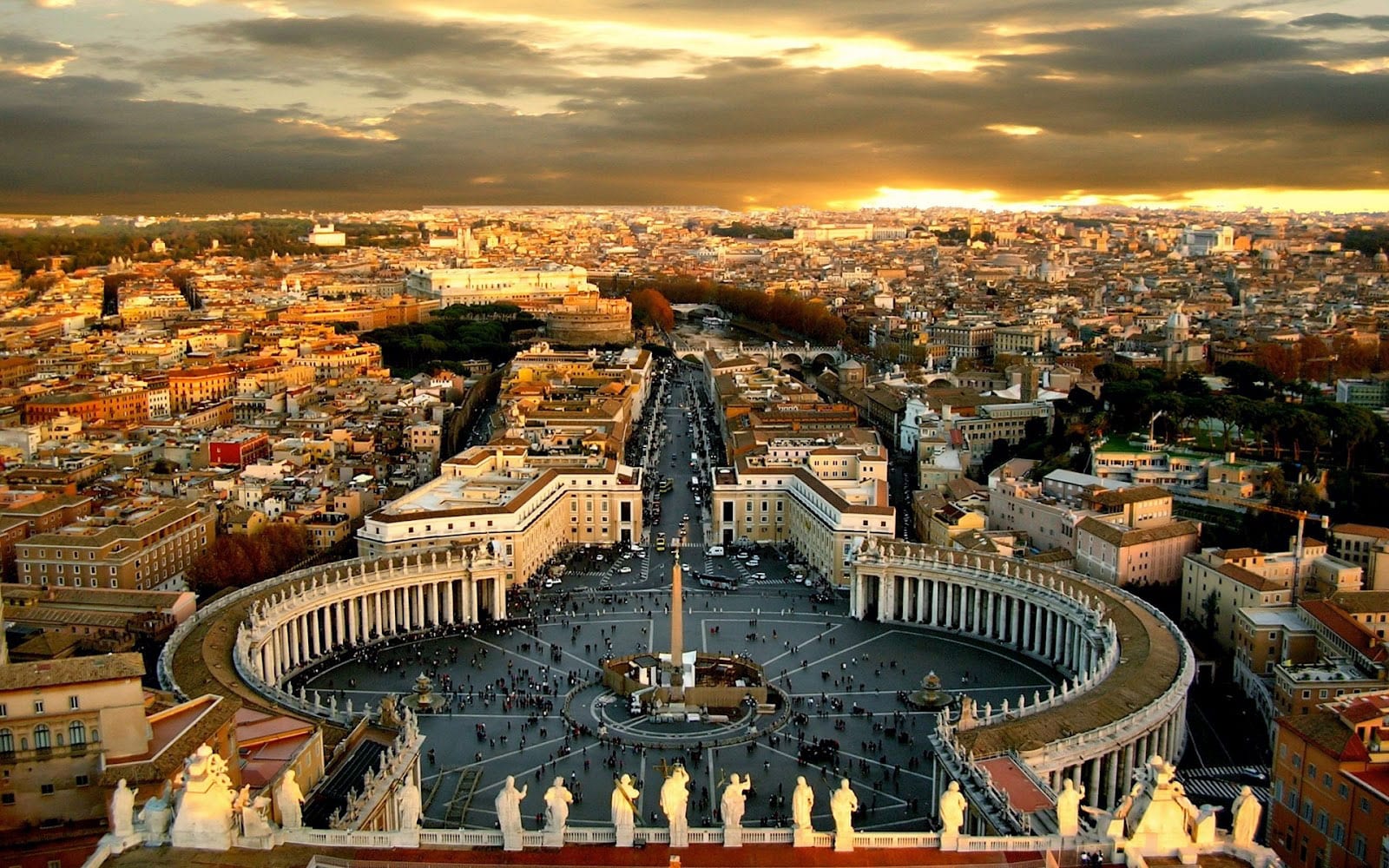


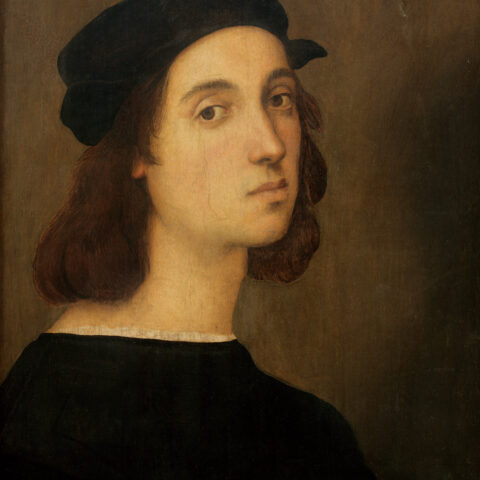
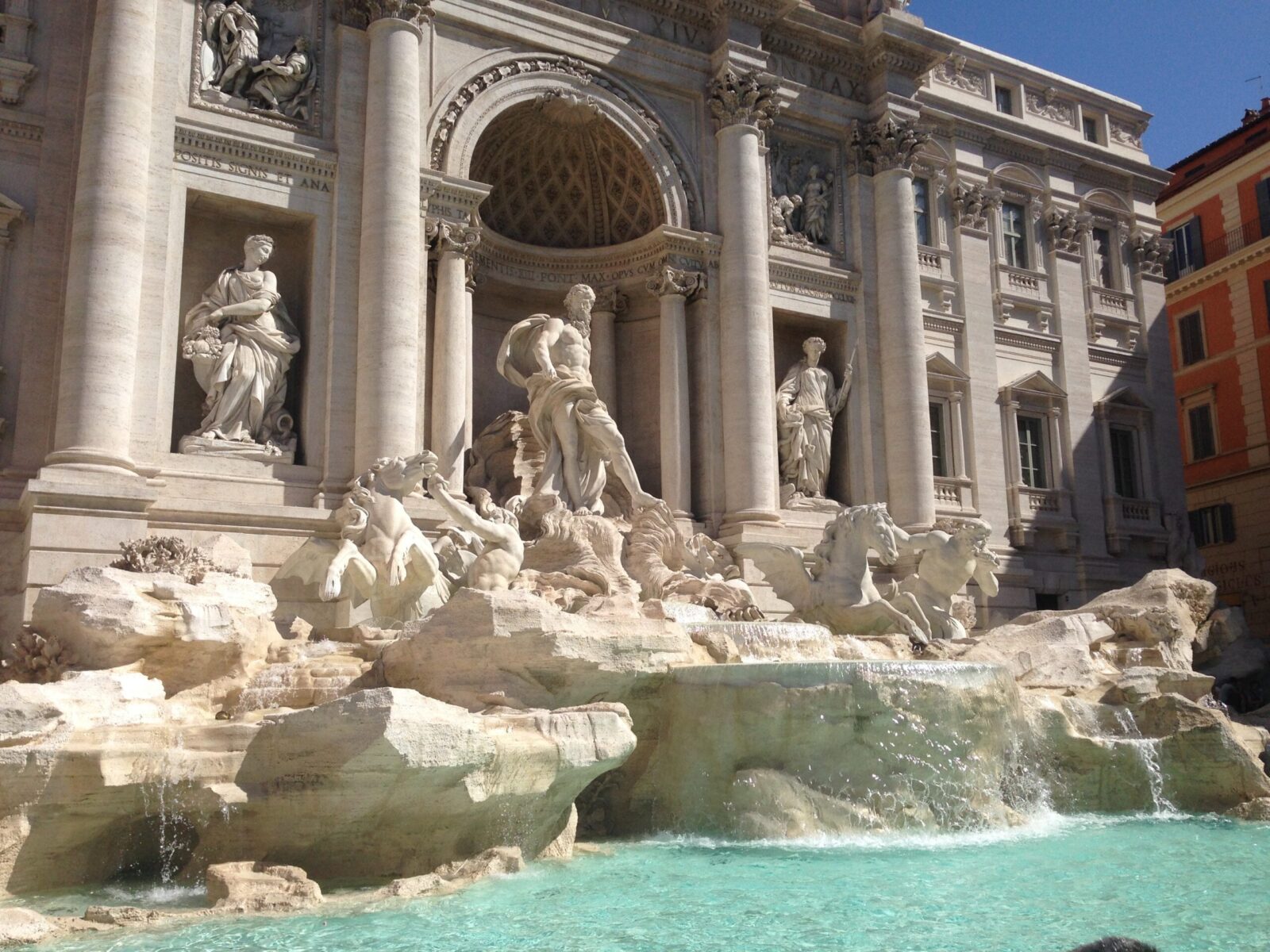
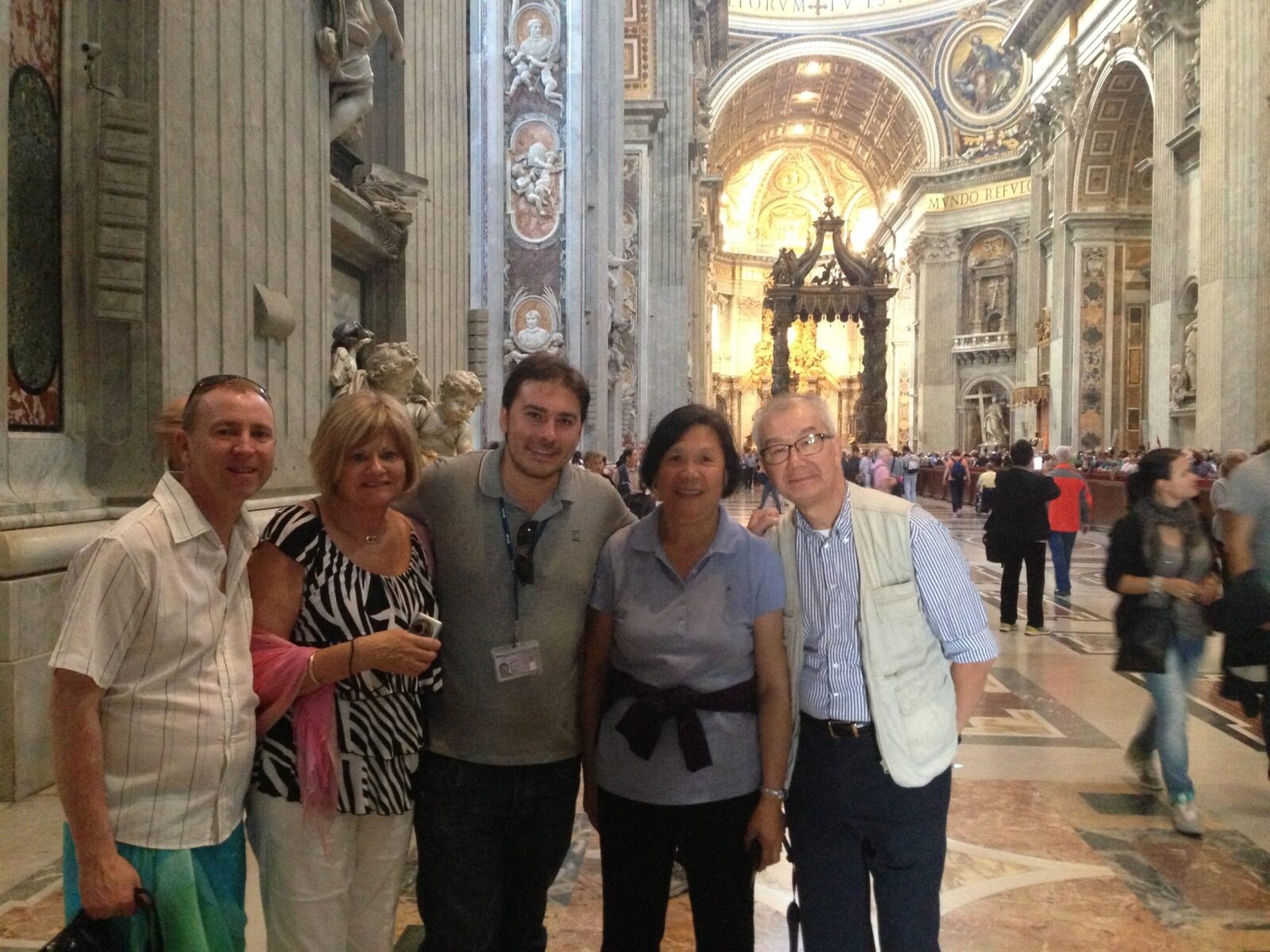



Leave a Reply